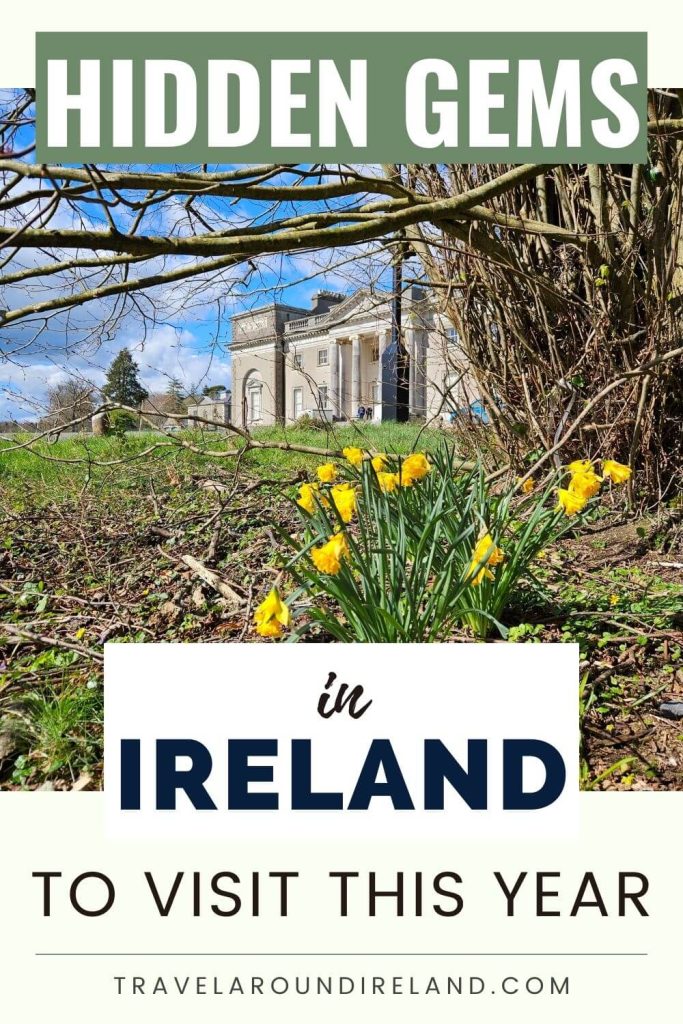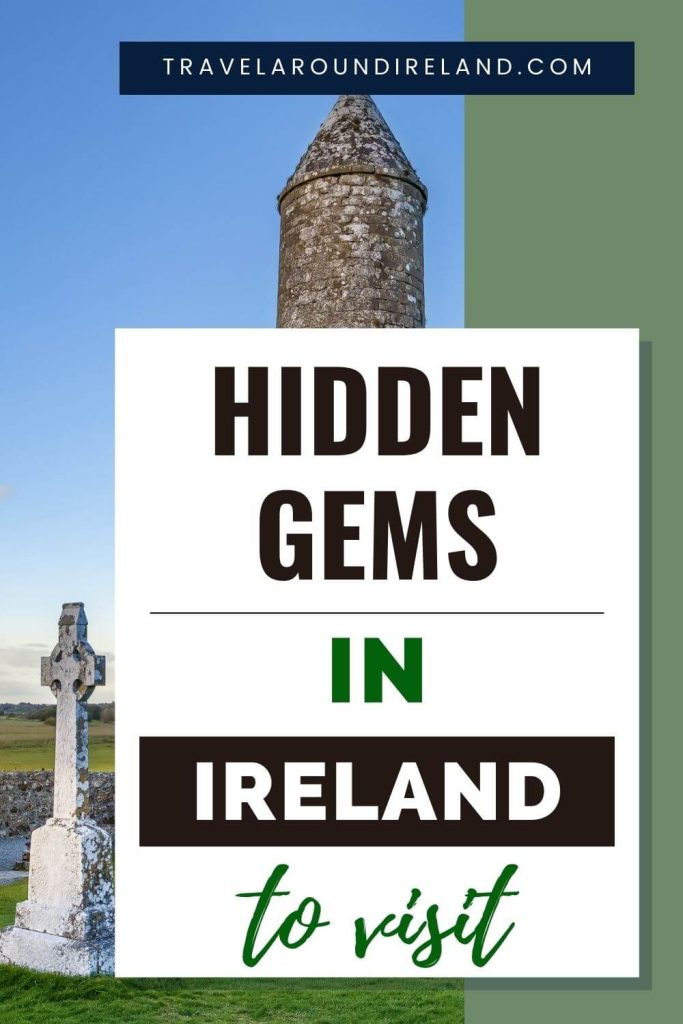Ireland’s enchanting landscapes and rich history offer more than just the typical tourist attractions. Beyond the well-trodden paths lie hidden treasures waiting to be discovered. You’ll find charming villages, ancient ruins, and breathtaking natural wonders off the beaten track.
These lesser-known Irish gems provide authentic experiences away from the crowds. From secluded beaches to mysterious archaeological sites, there’s no shortage of unique places to explore. You can immerse yourself in local culture, uncover forgotten stories, and create unforgettable memories.
Venture beyond the familiar to unearth Ireland’s best-kept secrets. These hidden gems showcase the country’s diverse beauty and offer a glimpse into its captivating past. Get ready to embark on an adventure that reveals the true heart of the Emerald Isle.
Ireland’s Hidden Gems
Ireland’s Lesser-Known Castles
Ireland’s countryside hides ancient fortresses and majestic manors waiting to be discovered. These hidden gems offer a glimpse into the country’s rich history and architectural heritage.
Rock of Dunamase
Perched atop a rocky outcrop in County Laois, the Rock of Dunamase commands breathtaking views of the surrounding landscape. This ruined castle dates back to the 12th century and played a significant role in medieval Irish history.
You’ll find the remains of a gatehouse, curtain walls, and a great hall as you explore the site. The castle’s strategic location made it a coveted stronghold, changing hands multiple times throughout its history.
Despite its ruined state, Dunamase offers a tangible connection to Ireland’s past. You can walk among the weathered stones and imagine life within its walls centuries ago.
When we visited a few years ago on a beautiful April day, the sun was shining and we were not the only ones there.
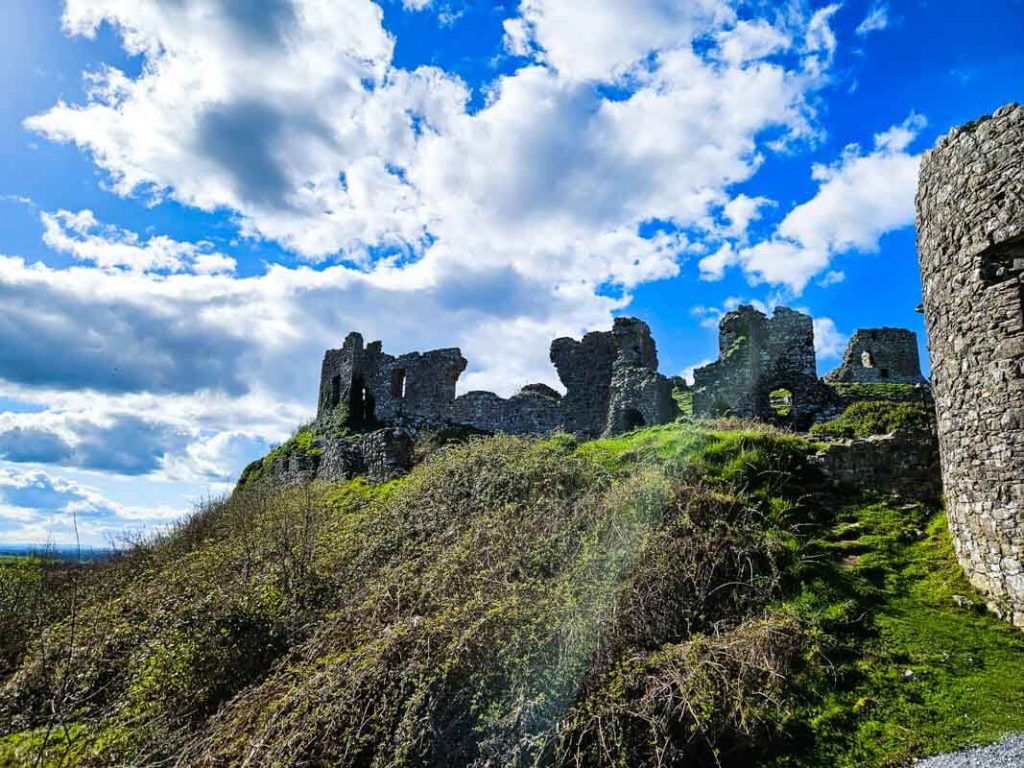
Huntington Castle and Gardens
Nestled in County Carlow, Huntington Castle presents a captivating blend of history and mystique. Built in 1625, this castle has been continuously inhabited by the same family for generations, and one of the owners often conducts the house tours.
During my visit, I took a castle tour during which I visited ornate rooms, filled with antiques and family heirlooms. The basement houses a unique feature: a temple dedicated to the Egyptian goddess Isis, created in the 1970s.
The owner pointed out a small drawing in the conservatory by someone famous who had been a guest at the castle in the 1920s. I won’t spoil it for you, you’ll just have to visit to find out who!
The castle grounds are also a must-visit and they boast stunning gardens, including formal Italian and French designs. You’ll find a 500-year-old yew walk, vibrant herbaceous borders, and a charming rose garden.
Huntington’s quirky charm and well-preserved interiors make it a fascinating destination for history buffs and garden enthusiasts alike. This is definitely a hidden gem in Ireland.

Discover Ancient Monastic Sites
Ireland’s landscape is dotted with remarkable monastic ruins, offering a glimpse into the country’s rich spiritual heritage. These sites showcase impressive stone structures and intricate high crosses, transporting visitors back in time.
Clonmacnoise
Clonmacnoise, situated on the banks of the River Shannon, was founded in 544 AD by Saint Ciaran. This medieval monastery became a major center of religion, learning, and craftsmanship.
The site features the remains of nine churches, two round towers, and three high crosses. The North Cross, dating back to the 9th century, is particularly noteworthy for its intricate carvings.
Visitors can explore the on-site museum, which houses a collection of grave slabs, stone carvings, and metalwork found at Clonmacnoise. The three Celtic High Crosses are also housed in the museum, moved inside to protect them from both human and natural destruction. What lies outside are replicas.
The site’s peaceful atmosphere and scenic riverside location make it a perfect spot for reflection and photography.
Note, Clonmacnoise is situated in County Offaly and is not easily accessible by public transport, so you must have your own transport to visit.
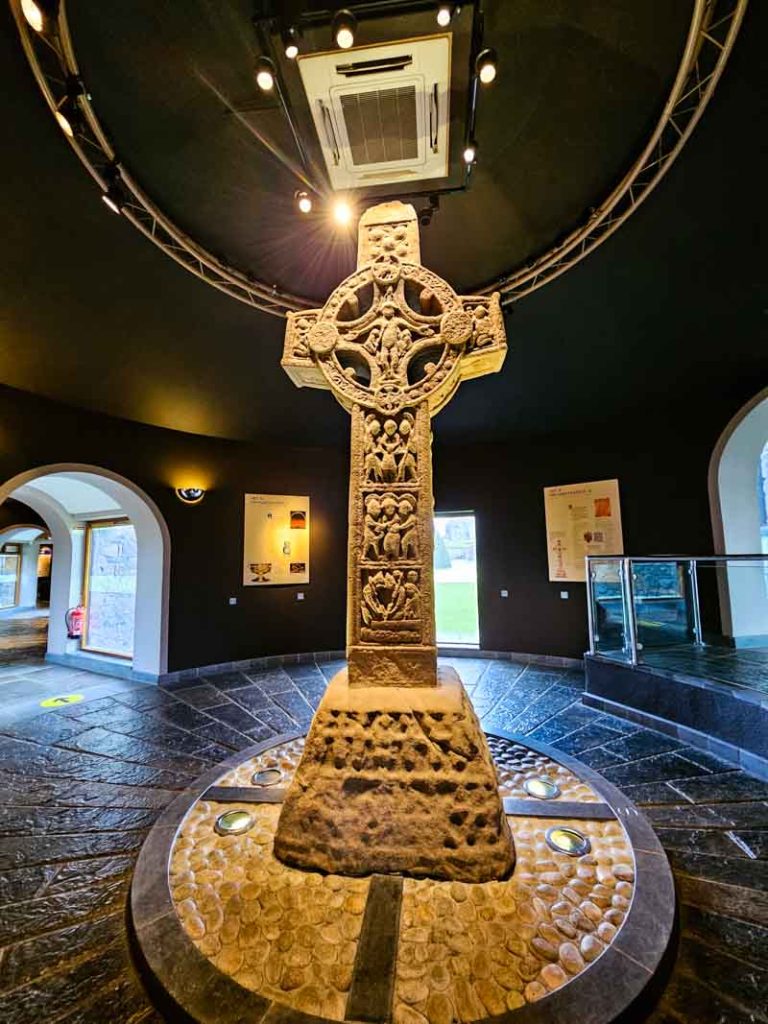
Glendalough
Nestled in the Wicklow Mountains, Glendalough was established by Saint Kevin in the 6th century. The name translates to “Valley of the Two Lakes,” reflecting its picturesque setting.
The site’s most iconic feature is the 30-meter-tall round tower, standing as a testament to medieval Irish architecture. You’ll also find the remains of several churches, including St. Kevin’s Church with its distinctive steep roof.
Glendalough’s Visitor Centre offers insights into the monastic way of life and the site’s history. The surrounding area provides excellent hiking opportunities, allowing you to combine cultural exploration with natural beauty.
We have visited Glendalough with our son during a family visit home and even he was impressed by both the monastic site and the lakes.
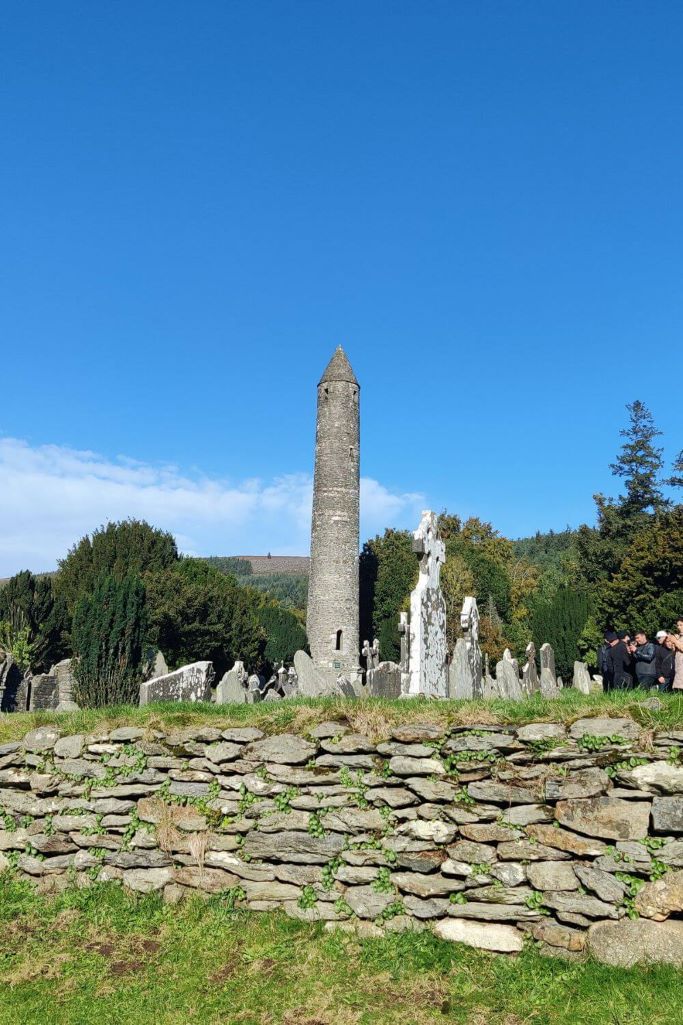
Picturesque Irish Towns and Villages
Ireland’s countryside is dotted with charming towns and villages that offer visitors a glimpse into authentic Irish life. These hidden gems showcase stunning landscapes, rich history, and warm local hospitality.
Baltimore
Baltimore, a small fishing coastal village in West Cork, captivates visitors with its picturesque harbor and colorful houses. You’ll find boats bobbing in the water and seagulls soaring overhead.
The village’s history as a pirate haven adds intrigue. Visit the Baltimore Beacon, a white-painted stone marker overlooking the bay. It offers breathtaking views of the surrounding islands and coastline.
For seafood lovers, Baltimore is a paradise. Try fresh catches at local restaurants or join a fishing excursion. The annual Seafood Festival in May celebrates the village’s maritime heritage with music, food, and festivities.
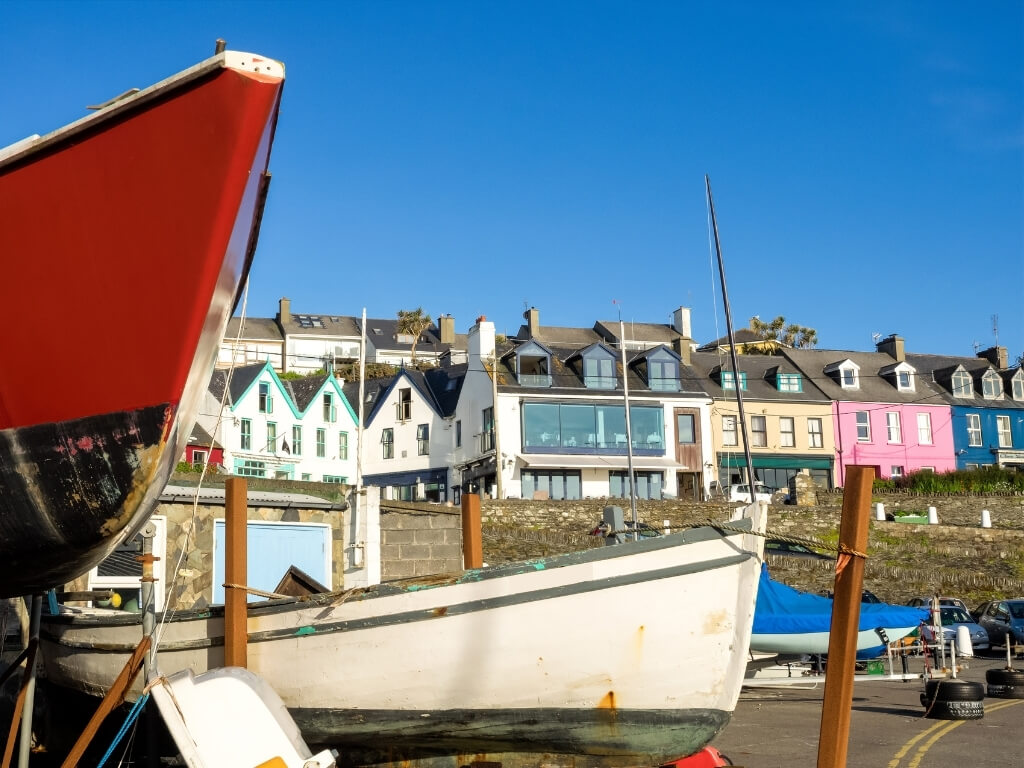
Sneem
Nestled in County Kerry, Sneem charms visitors with its vibrant buildings and peaceful atmosphere. The village is split by the Sneem River, creating distinct north and south squares connected by bridges.
You’ll find artisan shops, cozy pubs, and friendly locals eager to share stories. Explore the Sculpture Park, featuring works by both Irish and international artists. The pieces blend seamlessly with the natural surroundings.
Outdoor enthusiasts will appreciate Sneem’s location on the Ring of Kerry. It serves as an ideal base for hiking, cycling, and exploring nearby beaches. Don’t miss the stunning views from Kenmare Bay, just a short walk from the village center.
Carlingford
Situated between the Cooley Mountains and Carlingford Lough, this medieval town in County Louth offers a perfect blend of history and natural beauty. You’ll feel like you’ve stepped back in time as you walk the narrow streets lined with well-preserved buildings.
Visit King John’s Castle, perched on a rocky outcrop overlooking the lough. The views from here are spectacular. For a taste of local culture, join a traditional music session in one of the town’s lively pubs.
Carlingford is famous for its oysters. Try them at the annual Oyster Festival in August or at local seafood restaurants year-round. Active visitors can enjoy water sports on the lough or hike in the nearby Cooley Peninsula.
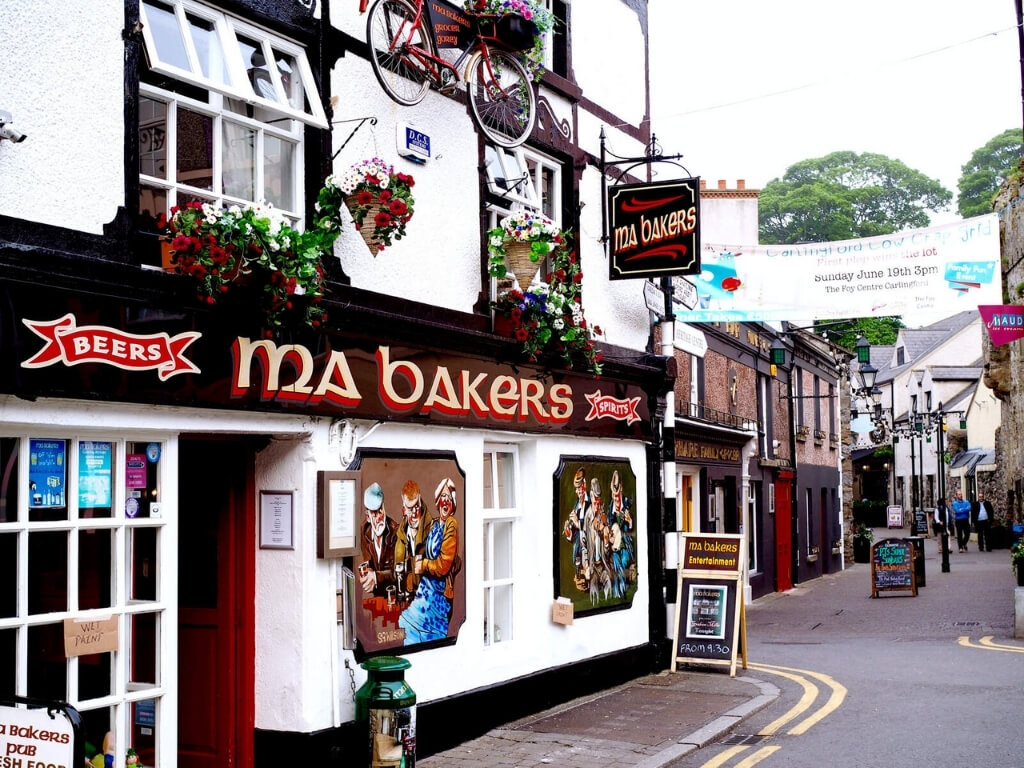
Historic Houses
Ireland boasts magnificent historic houses that offer glimpses into its aristocratic past. These architectural treasures showcase exquisite craftsmanship and provide immersive experiences for visitors.
Emo Court
Emo Court, located in County Laois, is a stunning neoclassical mansion designed by architect James Gandon. Built in the late 18th century, it features elegant proportions and intricate details.
The house is currently closed for renovations but once it opens, you’ll be captivated by the grand entrance hall with its ornate plasterwork and impressive dome. The drawing room and library showcase fine furnishings and artwork from various periods.
While restoration work is underway, you can still visit the stunning estate gardens that are equally enchanting. Formal lawns, winding paths, and serene lakes create a picturesque setting for strolls. Don’t miss the yew walk, a tranquil avenue lined with ancient yew trees.
Once reopened, guided tours will provide fascinating insights into the house’s history and restoration. The on-site tea rooms offer a perfect spot to relax and reflect on your visit. I can highly recommend their baguette sandwiches with a cup of tea after you explore the gardens.
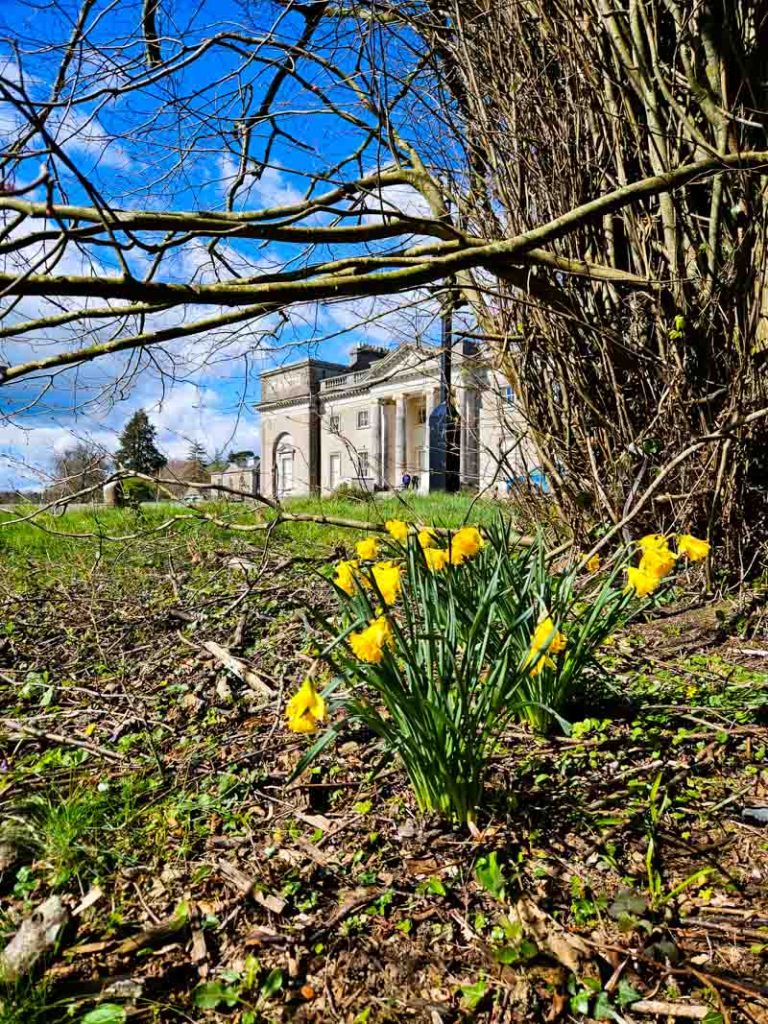
Lissadell House
Nestled in County Sligo, Lissadell House is a Greek Revival mansion with strong connections to Irish history and literature. Built in the 1830s, it was the childhood home of Constance Markievicz, a prominent figure in Ireland’s fight for independence.
The house’s austere exterior contrasts with its opulent interiors. You’ll find beautifully restored rooms filled with period furnishings and family heirlooms. The gallery showcases an impressive collection of paintings and sculptures.
Lissadell’s gardens are a highlight, featuring a Victorian kitchen garden and Alpine garden. The estate also offers scenic walks along Sligo Bay, providing breathtaking views of the surrounding landscape.
Special exhibitions and events throughout the year bring the house’s rich history to life. Be sure to visit the tea rooms for delicious homemade treats using produce from the estate’s gardens. However, be aware that the house itself is only open for tours during June, July and August.
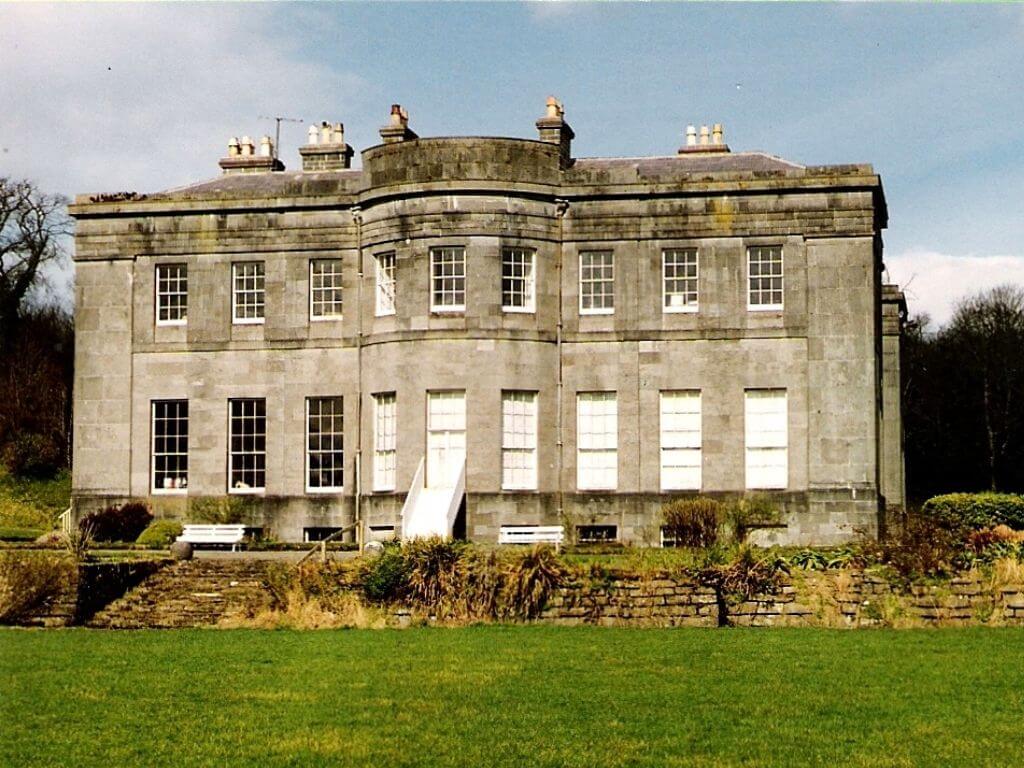
Natural Beauty
Ireland’s landscape offers breathtaking vistas and hidden natural wonders. These lesser-known spots showcase the country’s raw beauty and provide unforgettable experiences for visitors.
Slieve League Cliffs
You’ll find the Slieve League Cliffs in County Donegal, rising dramatically from the Atlantic Ocean. At nearly 2,000 feet high, they’re among Europe’s tallest sea cliffs.
The cliffs offer stunning panoramic views of the coastline and ocean. On clear days, you can see as far as County Sligo and County Mayo.
A well-maintained path leads to the summit, allowing for safe exploration. The Pilgrim’s Path provides a more challenging hike for experienced walkers.
Wildlife enthusiasts will appreciate the diverse bird species that nest on the cliffs. Keep an eye out for puffins, gannets, and peregrine falcons.
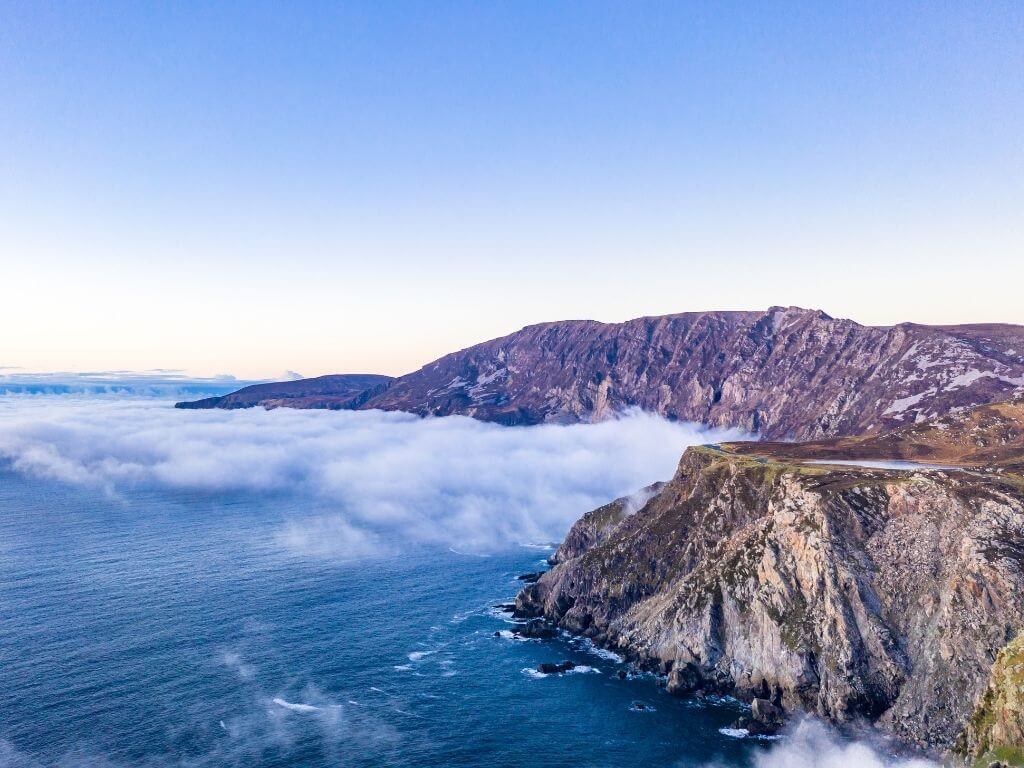
Loop Head Peninsula
Located in County Clare, the Loop Head Peninsula is a haven of unspoiled natural beauty. This narrow strip of land juts out into the Atlantic, offering spectacular coastal scenery.
The Loop Head Lighthouse stands at the peninsula’s westernmost point and is one of the best lighthouses to visit in Ireland. You can climb to the top for panoramic views of the surrounding area.
Explore the rugged coastline dotted with sea stacks and natural arches. The Bridges of Ross, a series of natural rock formations, are particularly impressive.
Dolphin watching is popular here, with bottlenose dolphins frequently spotted in the nearby waters. The peninsula is also a birdwatcher’s paradise, home to numerous seabird species.
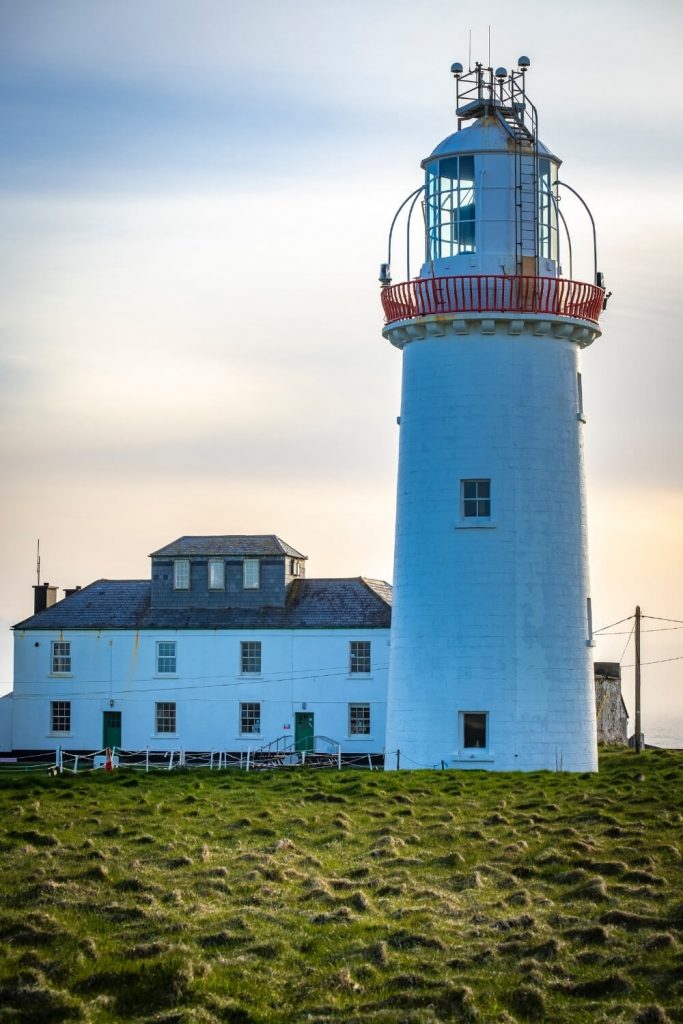
Wicklow Way
The Wicklow Way is a 131-kilometer trail through the Wicklow Mountains, just south of Dublin. This long-distance path offers a diverse range of landscapes and natural beauty.
You’ll traverse through forests, open moorland, and mountain passes. The trail provides stunning views of the surrounding countryside and distant Dublin Bay.
Highlights include the serene Glendalough Valley, home to an ancient monastic site. The Powerscourt Waterfall, Ireland’s highest at 121 meters, is another must-see attraction.
The Way is well-marked and suitable for hikers of various skill levels. You can tackle the entire trail over several days or choose shorter sections for day hikes.
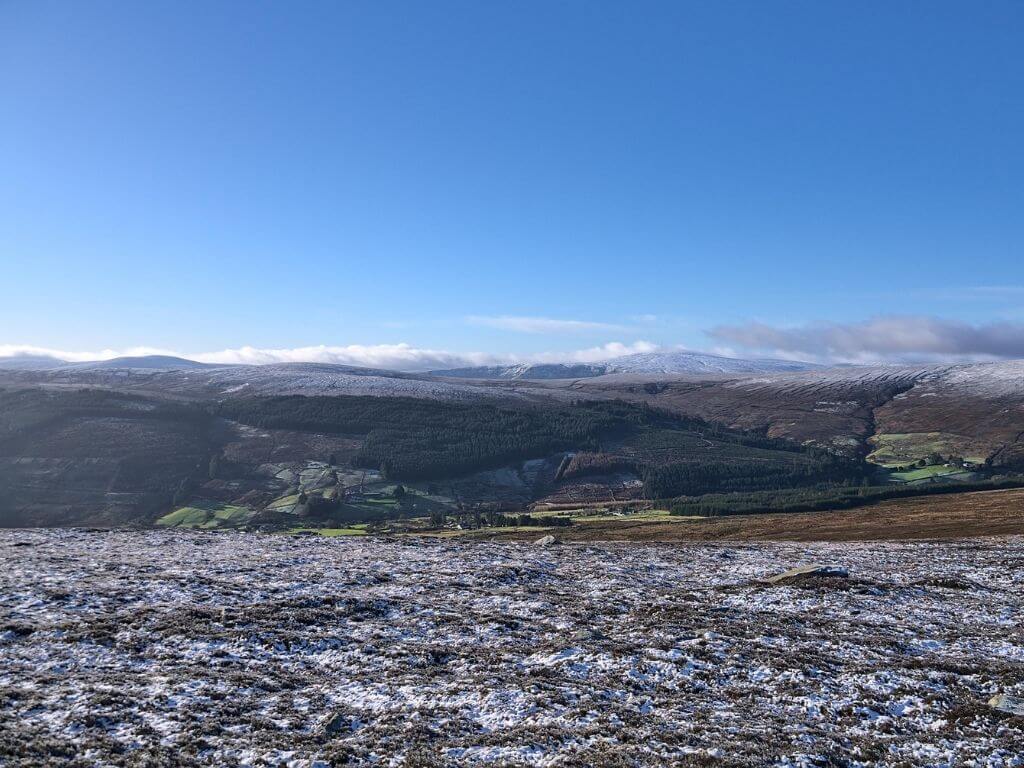
Coastal Escapes
Ireland’s coastline offers stunning hidden gems for beach lovers and nature enthusiasts. These lesser-known spots provide tranquil retreats away from the crowds.
Silver Strand Beach
Located in County Mayo, Silver Strand Beach is a secluded paradise. Its crescent-shaped shore stretches for about 3 kilometers, offering pristine white sand and crystal-clear waters.
You’ll find excellent swimming conditions here during summer months. The beach is backed by rolling sand dunes, perfect for picnics or leisurely walks.
For the best views, climb the nearby cliffs. You’ll be rewarded with panoramic vistas of Clew Bay and its many islands.
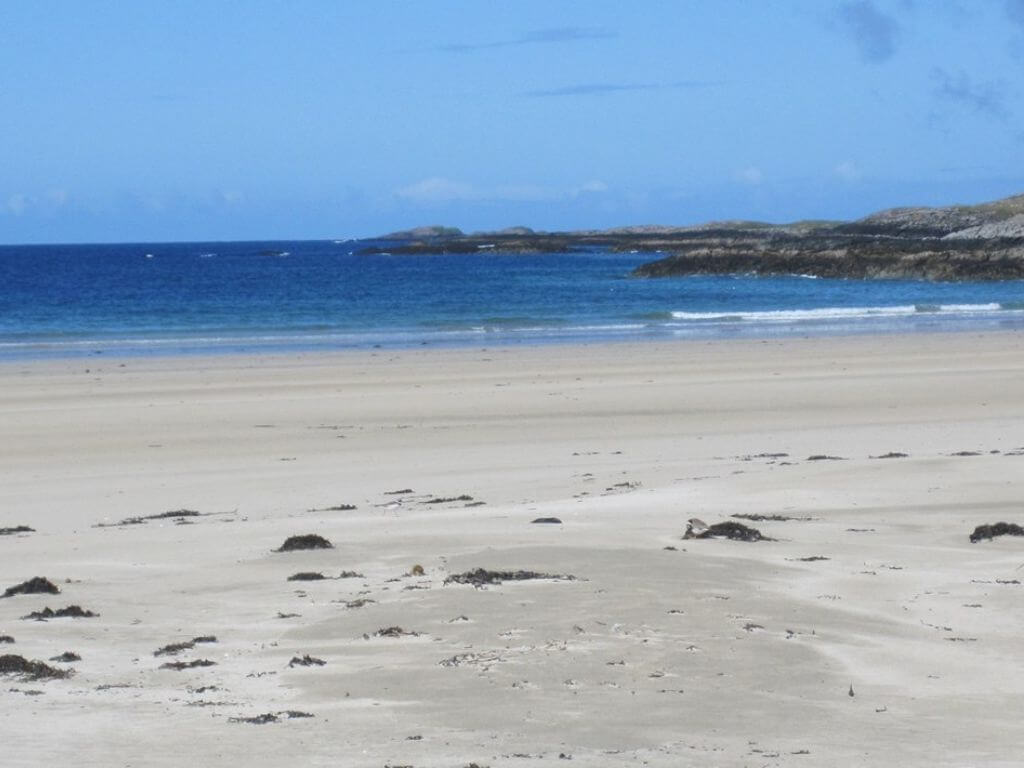
Copper Coast Geopark
Situated in County Waterford, the Copper Coast Geopark is a UNESCO Global Geopark. It spans 25 kilometers of stunning coastline between Tramore and Dungarvan.
You’ll discover secluded coves, sea stacks, and dramatic cliffs here. The area’s rich geological history is evident in its rock formations, dating back 460 million years.
Visit the Copper Coast Geopark Centre in Bunmahon to learn about the region’s mining heritage. Don’t miss the Tankardstown Engine House, a remnant of the area’s copper mining past.
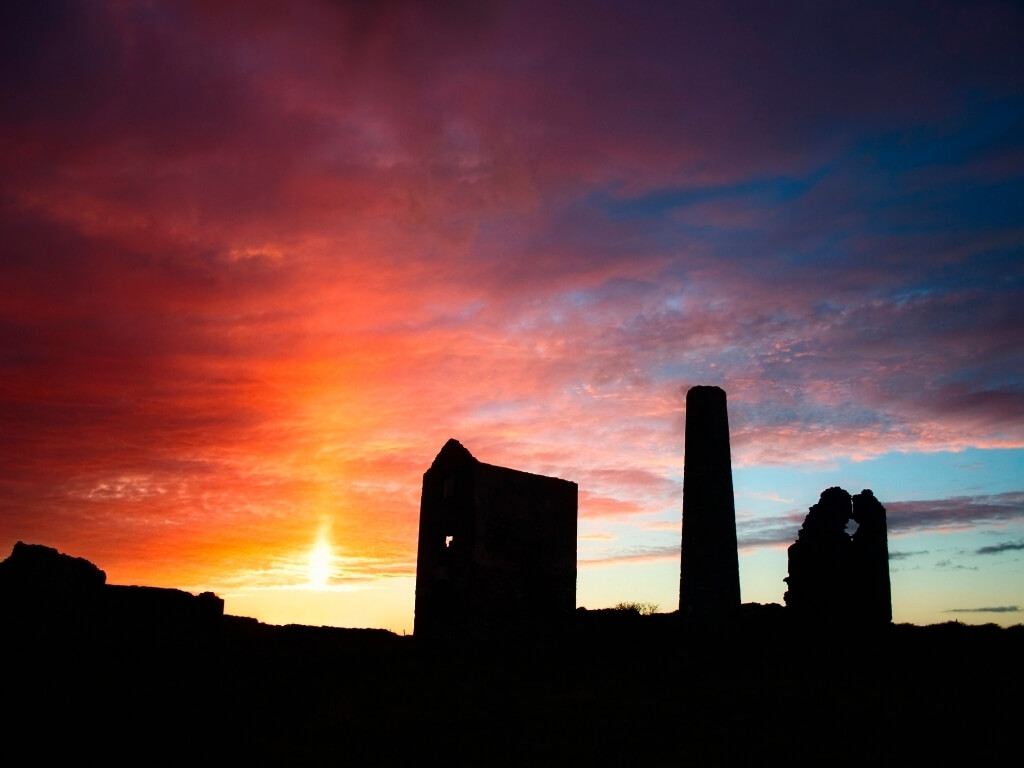
Keem Bay
Keem Bay, located on Achill Island in County Mayo, is a hidden treasure. This horseshoe-shaped bay boasts turquoise waters and a golden sandy beach.
You’ll reach the bay via a winding cliff road, offering breathtaking views along the way. The beach is sheltered by towering cliffs, creating a peaceful atmosphere.
Keem Bay is ideal for swimming, snorkeling, and sunbathing. Keep an eye out for basking sharks, which sometimes visit the bay during summer months.
For hiking enthusiasts, the nearby Croaghaun cliffs offer challenging trails with rewarding coastal views.
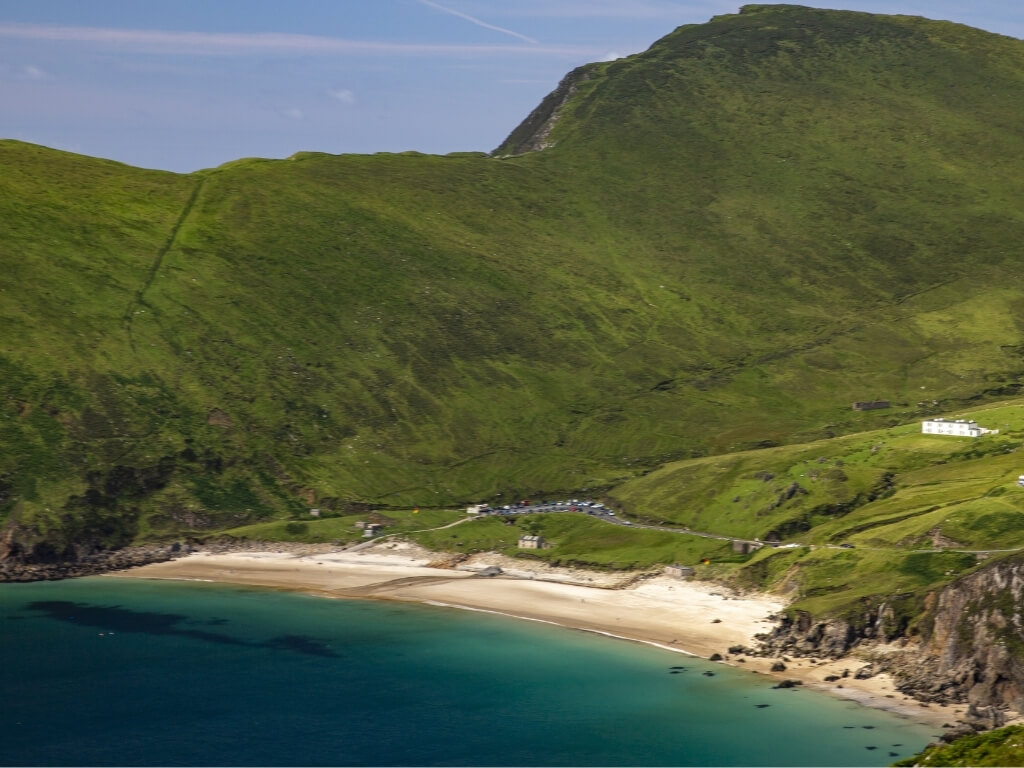
Historic Lighthouses
Ireland’s rugged coastline boasts several historic lighthouses that offer stunning views and rich maritime heritage. These beacons have guided ships safely to shore for centuries, combining practical function with architectural beauty.
Hook Lighthouse
Hook Lighthouse stands proudly at the tip of Hook Peninsula in County Wexford. Built in the 13th century, it’s one of the oldest operational lighthouses in the world. Its sturdy stone tower rises 36 meters high, offering panoramic views of the Celtic Sea.
You can take guided tours to learn about the lighthouse’s 800-year history. Climb the 115 steps to the balcony for breathtaking vistas. The visitor center features interactive exhibits detailing the lives of lighthouse keepers and the evolution of maritime safety.
Don’t miss the opportunity to spot whales and dolphins from the viewing platform. The surrounding area also offers scenic coastal walks and picnic spots.
I can highly recommend the guided tour at Hook. Our tour guide, John, was from Dublin and we laughed our way around the lighthouses while he regaled us with stories.
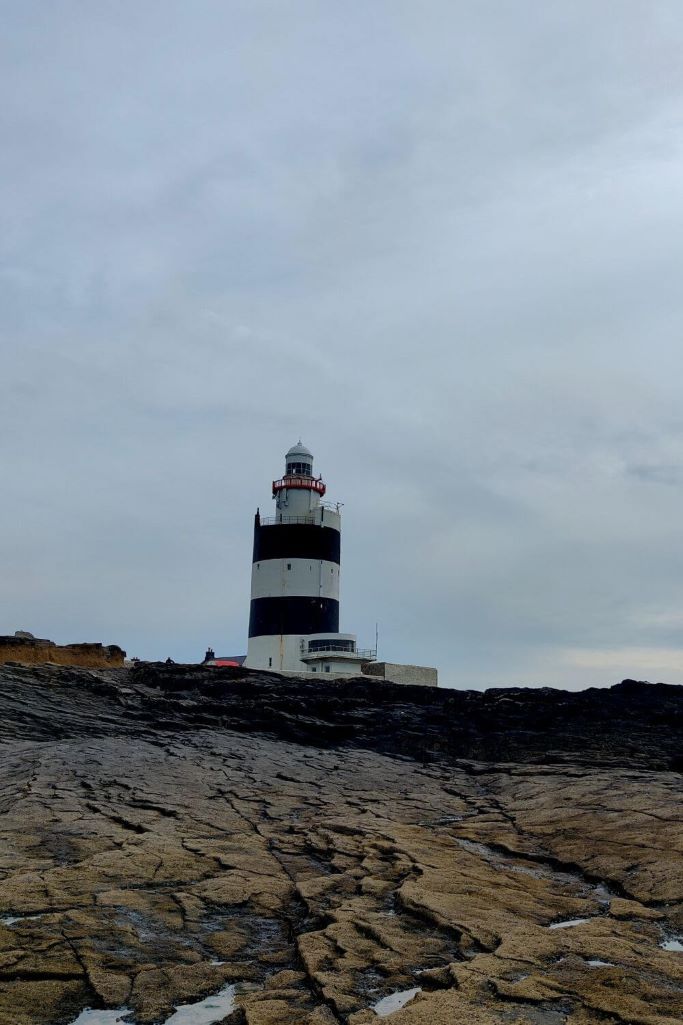
Fanad Head Lighthouse
Perched on Fanad Head in County Donegal, this iconic lighthouse overlooks the wild Atlantic Ocean. Built in 1817, its white tower contrasts beautifully against the rugged cliffs and azure waters.
You can book a tour to explore the lighthouse and keeper’s cottages. The climb to the top rewards you with spectacular views of Lough Swilly and Mulroy Bay. On clear days, you might even spot the Scottish coast.
The lighthouse grounds provide excellent photo opportunities. Keep an eye out for seabirds and seals in the surrounding waters. Consider staying overnight in one of the restored keeper’s cottages for a unique experience.
I haven’t had a chance to visit Fanad yet, but it is high on my bucket list for Ireland.
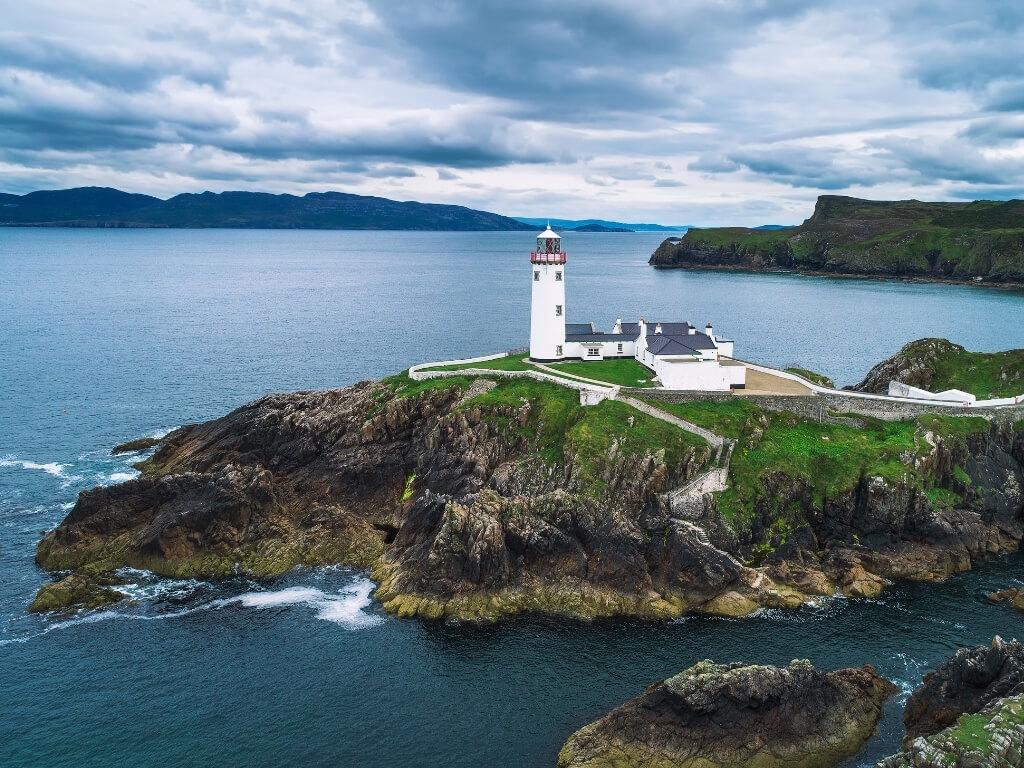
Unique Museums
Ireland boasts several distinctive museums that offer fascinating glimpses into the country’s rich history and culture. These hidden gems provide immersive experiences and showcase unique aspects of Irish heritage.
EPIC, Irish Emigration Museum
EPIC, located in Dublin’s Docklands, tells the story of Irish emigration through interactive exhibits. You’ll explore 20 themed galleries covering 1,500 years of Irish history. The museum uses cutting-edge technology to bring personal stories to life.
Touch screens and motion sensor displays engage visitors of all ages. You can trace your Irish roots at the Irish Family History Centre within the museum. EPIC also hosts temporary exhibitions and events throughout the year.
The museum is housed in the beautifully restored CHQ Building, a historic warehouse dating back to 1820. Its location near the River Liffey adds to the atmospheric experience.
I visited EPIC during a one-day tour of Dublin with my sister, and it was amazing. I’ll be revisiting with my son when we get a chance. I can also recommend visiting the Jeanie Johnson Famine Ship, which is docked just across the road from the museum.
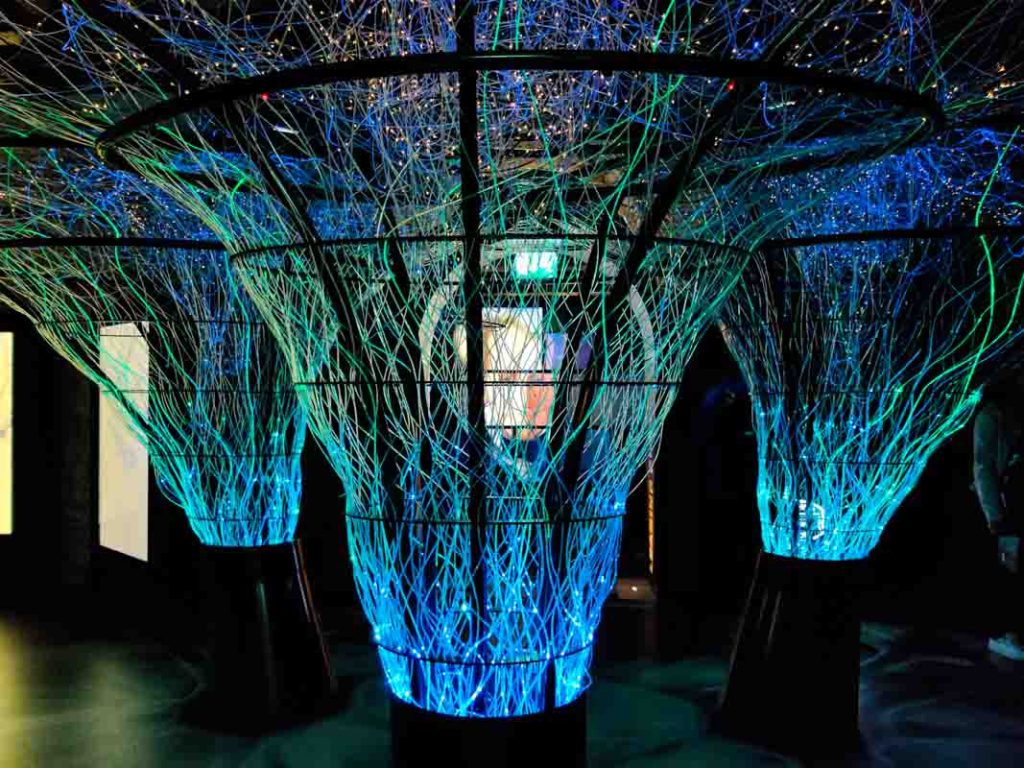
Irish Agricultural Museum
Situated in Johnstown Castle, County Wexford, the Irish Agricultural Museum offers a unique perspective on rural life in Ireland. You’ll find an extensive collection of farm machinery, tools, and household items spanning the 18th to 20th centuries.
The museum is divided into several sections, including:
- The Great Famine exhibition
- A recreated rural kitchen
- Displays on crop cultivation and animal husbandry
You can explore vintage tractors, threshing machines, and horse-drawn equipment. The museum also features exhibits on traditional crafts like blacksmithing and cooperage.
The surrounding Johnstown Castle Estate provides beautiful gardens and woodland walks, making it an ideal destination for a full day out.
We visited the Irish Agriculture Museum during a week-long stay in Wexford one summer and it was fascinating. I especially enjoyed the Great Famine exhibition room which gave great details about the famine, how it started and the consequences of it.
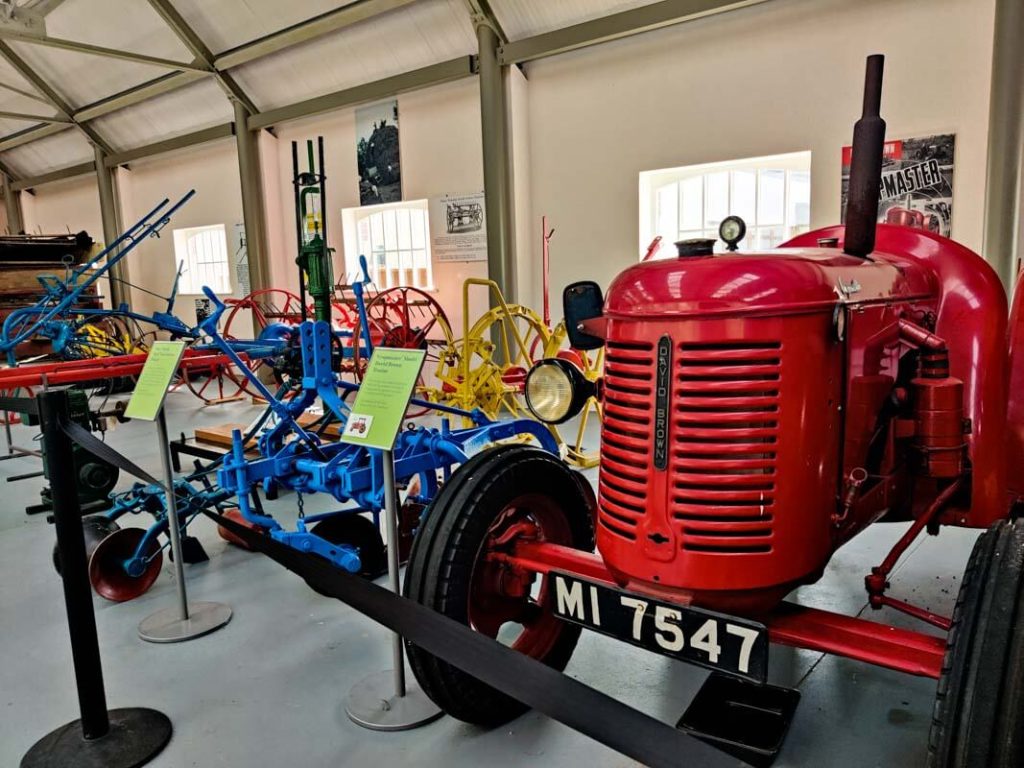
Ireland’s Gastronomy
Ireland’s culinary scene offers unique experiences that showcase local flavors and traditions. Two standout food festivals highlight the country’s gastronomic delights.
Dingle Food Festival
The Dingle Food Festival transforms this charming coastal town into a food lover’s paradise each October. You’ll find streets lined with stalls offering local specialties and artisanal products.
Sample freshly caught seafood, Kerry lamb, and farmhouse cheeses. Don’t miss the popular Taste Trail, where you can explore over 70 venues serving small bites and drinks.
Cooking demonstrations by renowned chefs provide insights into Irish cuisine. You can also join workshops to learn traditional skills like bread-making or foraging.
Taste of Donegal
Set against the backdrop of Donegal Bay, this festival celebrates the region’s rich food heritage every September. You’ll discover a diverse range of local and international cuisines.
The event features over 120 food and drink exhibitors. Try Donegal’s famous seafood, including oysters and smoked salmon. Sample craft beers and artisanal spirits from local producers.
Cooking competitions add excitement, with chefs battling for titles like “Donegal Chowder Champion.” You can also attend masterclasses to enhance your culinary skills.
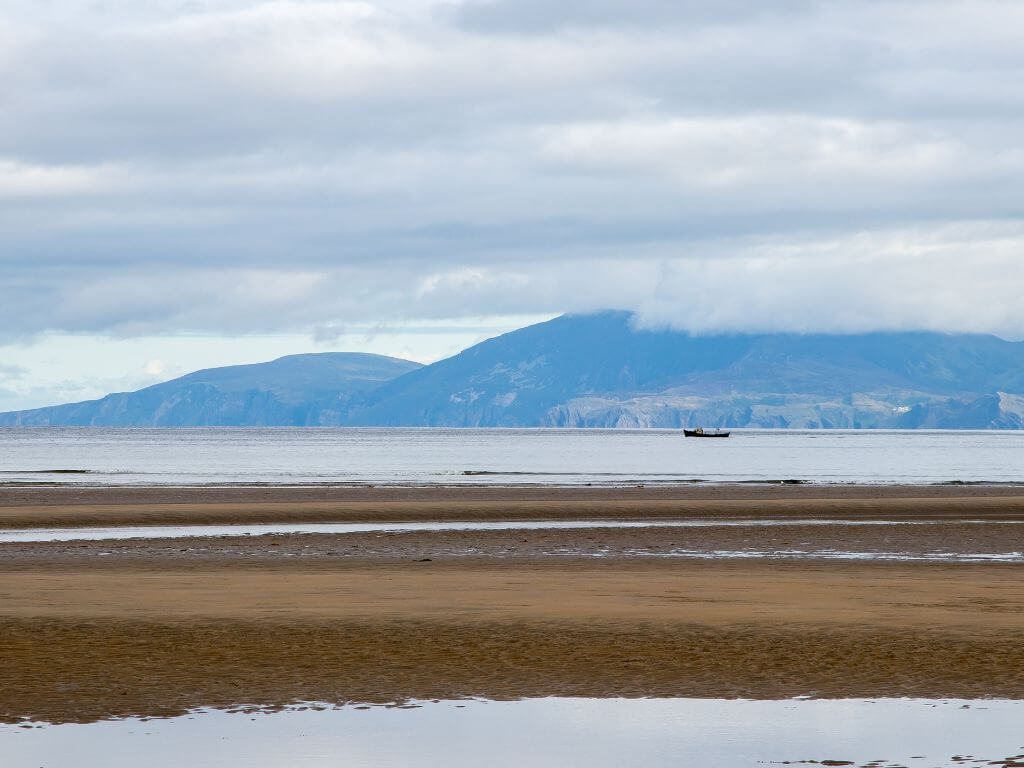
Breathtaking Waterfalls
Ireland boasts stunning waterfalls that captivate visitors with their natural beauty and serene surroundings. You’ll find these hidden gems tucked away in lush forests and dramatic landscapes.
Glenbarrow Waterfall
Nestled in the Slieve Bloom Mountains, Glenbarrow Waterfall offers a picturesque retreat. You’ll encounter three cascades along the River Barrow as you hike through the forest.
The main waterfall drops 30 meters, creating a mesmerizing sight. Moss-covered rocks and fallen trees add to the area’s enchanting atmosphere.
For the best views, visit after rainfall when the water flow is at its peak. Remember to wear sturdy shoes, as the trail can be slippery.
We visited the Glenbarrow Waterfall on a lovely April day but be warned, if you continue past the waterfall, the path gets very muddy if there has been rainfall. You can always turn back once you reach the main cascade and travel back along the wooded path which is not as muddy.
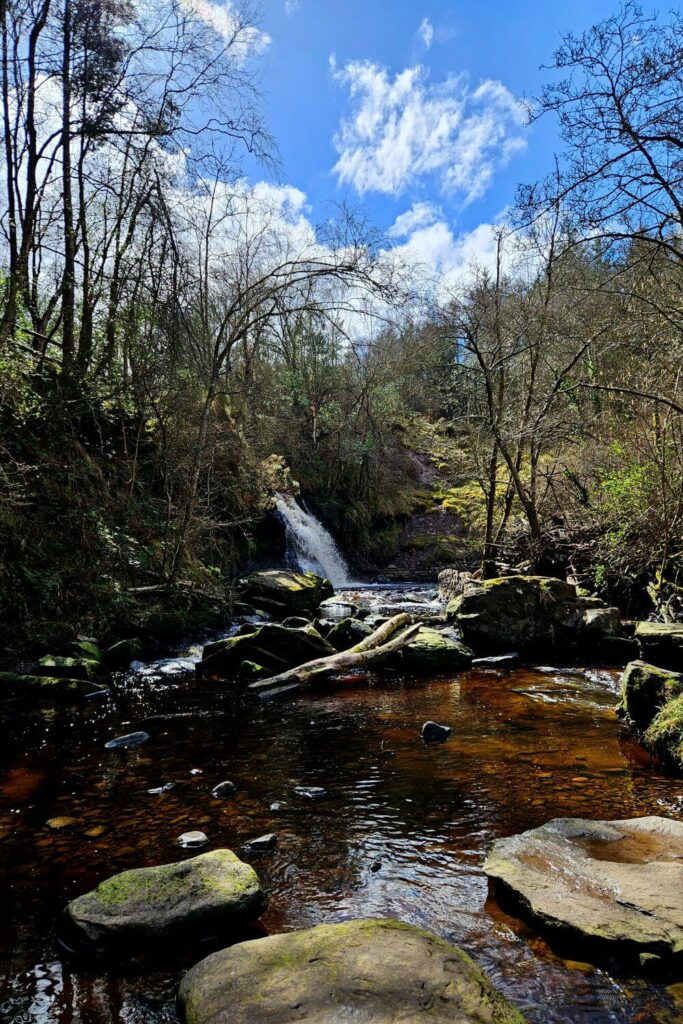
Powerscourt Waterfall
Ireland’s highest waterfall, Powerscourt, plunges 121 meters in County Wicklow. You’ll be awestruck by its magnitude and the surrounding ancient trees.
The waterfall is part of the Powerscourt Estate, offering well-maintained paths and picnic areas. Spring and autumn provide spectacular views with blooming flowers or colorful foliage.
Keep an eye out for native wildlife, including red squirrels and various bird species. Bring a camera to capture the waterfall’s beauty against the backdrop of the Wicklow Mountains.
Just be warned, during summer and on sunny days, the waterfall can get very busy with visitors. Go either earlier in the day or later in the afternoon to avoid the worst of the crowds. There is a refreshment hut where you can get a warm cup of tea or coffee to enjoy while the kids are enjoying themselves in the playground if you visit as a family.
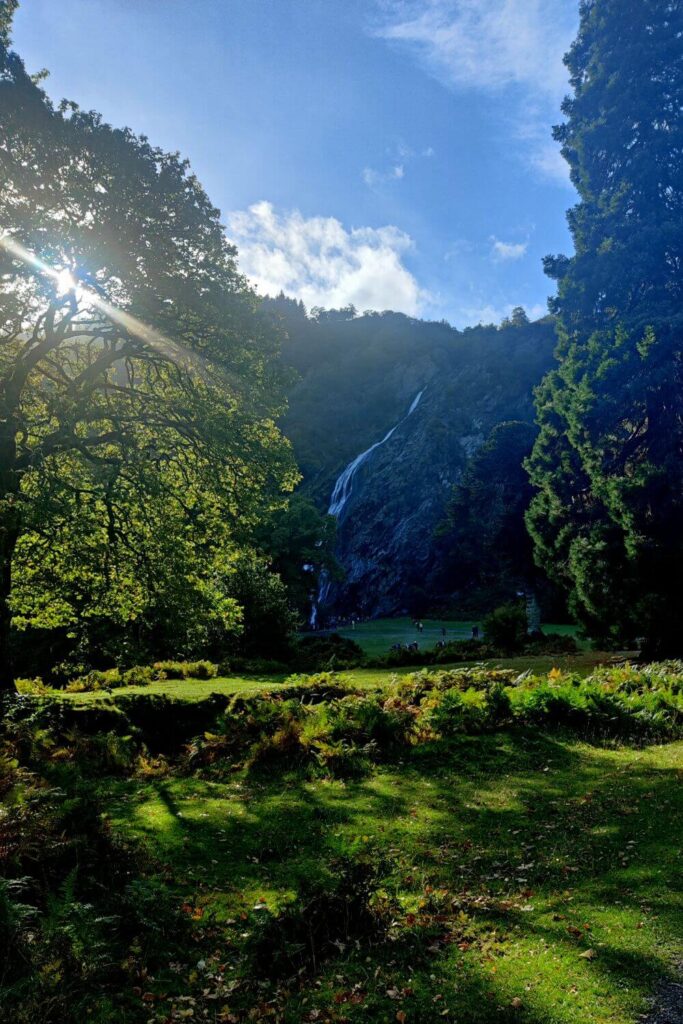
Incredible Gardens
Ireland boasts stunning gardens that showcase natural beauty and horticultural artistry. These hidden gems offer peaceful retreats and vibrant displays of flora.
Altamont Gardens
Nestled in County Carlow, Altamont Gardens is a botanical wonderland spanning 40 acres. You’ll find a diverse collection of plants, trees, and flowers throughout the year.
The garden’s centerpiece is the Ice Age Glen, a tranquil valley with ancient oak trees and a babbling stream. As you stroll along the paths, you’ll encounter colorful flowerbeds, a serene lake, and an arboretum featuring rare specimens.
Don’t miss the 100 steps, a series of terraces leading down to the River Slaney. These steps offer breathtaking views of the surrounding countryside.
You cannot enter the house attached to the gardens but can capture pictures of it from the gardens. The walk along the river is idyllic and the gardens are a treasure trove. There is also a small tearoom where you can get refreshments to warm up after your walk.
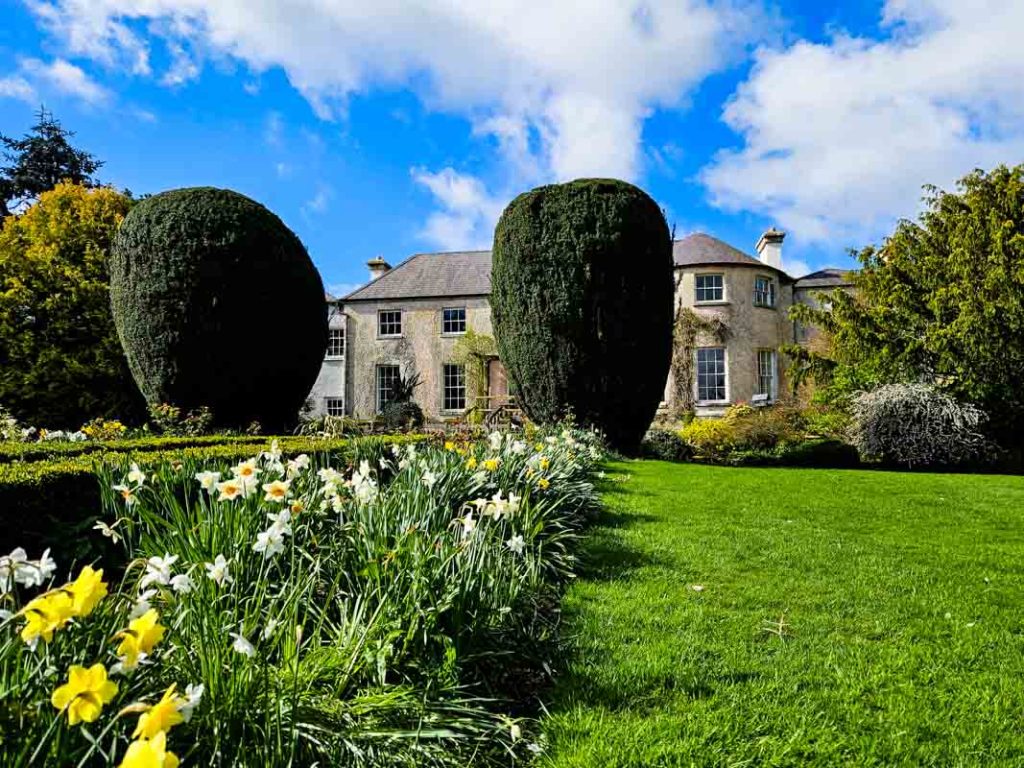
National Botanic Gardens
Located in Glasnevin, Dublin, the National Botanic Gardens is a horticultural haven. This 48-acre oasis houses over 17,000 plant species from around the world.
You’ll be captivated by the Victorian-era glasshouses, including the iconic Palm House and Curvilinear Range. These structures protect tropical and subtropical plants, creating a lush indoor environment.
The gardens feature themed areas like the Rock Garden and the Herbaceous Border. You can explore the arboretum, home to numerous native and exotic trees. Just watch out for the squirrels. One came running over towards my son and me when we visited last year and it started climbing my leg!
While I visited the Botanic Gardens as a young girl on a school tour, it was only on my most recent visit with my son and sister-in-law that I truly appreciated its beauty. If it is a chilly Dublin day, pop into the tearoom for a sandwich and cuppa.
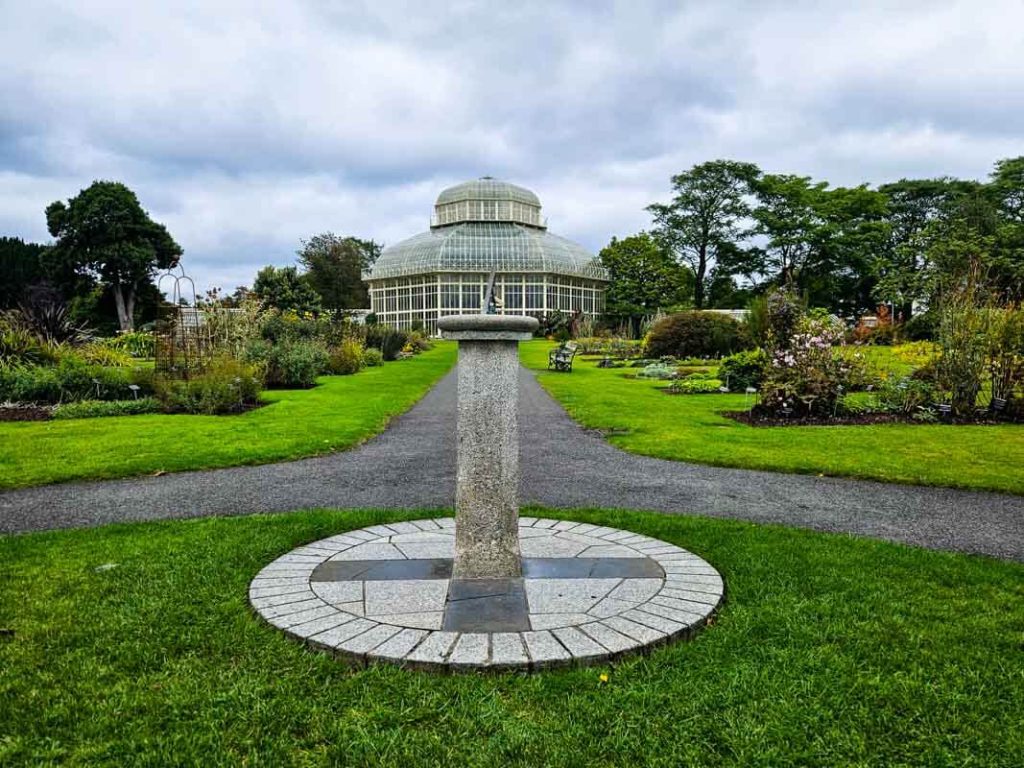
Cultural Festivals and Events
Ireland hosts vibrant celebrations that showcase its rich heritage and lively spirit. These events offer unique opportunities to immerse yourself in Irish culture and traditions.
Galway Oyster Festival
The Galway Oyster Festival, held annually in September, is a seafood lover’s paradise. You’ll witness the World Oyster Opening Championship, where skilled shuckers compete for the coveted title.
Sample freshly shucked oysters paired with crisp white wines. Enjoy live music and dancing in the streets of Galway. The festival also features cooking demonstrations by renowned chefs, giving you a chance to learn new culinary techniques.
Don’t miss the seafood trail, where local restaurants offer special menus highlighting the region’s finest catches. The festival’s lively atmosphere and delicious offerings make it a must-visit event for food enthusiasts.
Puck Fair
Puck Fair, one of Ireland’s oldest festivals, takes place in Killorglin, County Kerry, every August. This three-day celebration centers around the crowning of a wild mountain goat as “King Puck.”
You’ll witness the peculiar sight of a goat being paraded through town and placed on a pedestal. The fair features traditional Irish music, dancing, and street performances.
Browse the bustling market stalls selling local crafts, food, and souvenirs. Enjoy fairground rides and games suitable for all ages. As night falls, join the locals in the pubs for lively sing-alongs and storytelling sessions.
Puck Fair offers a unique glimpse into Ireland’s rural traditions and provides an unforgettable cultural experience.
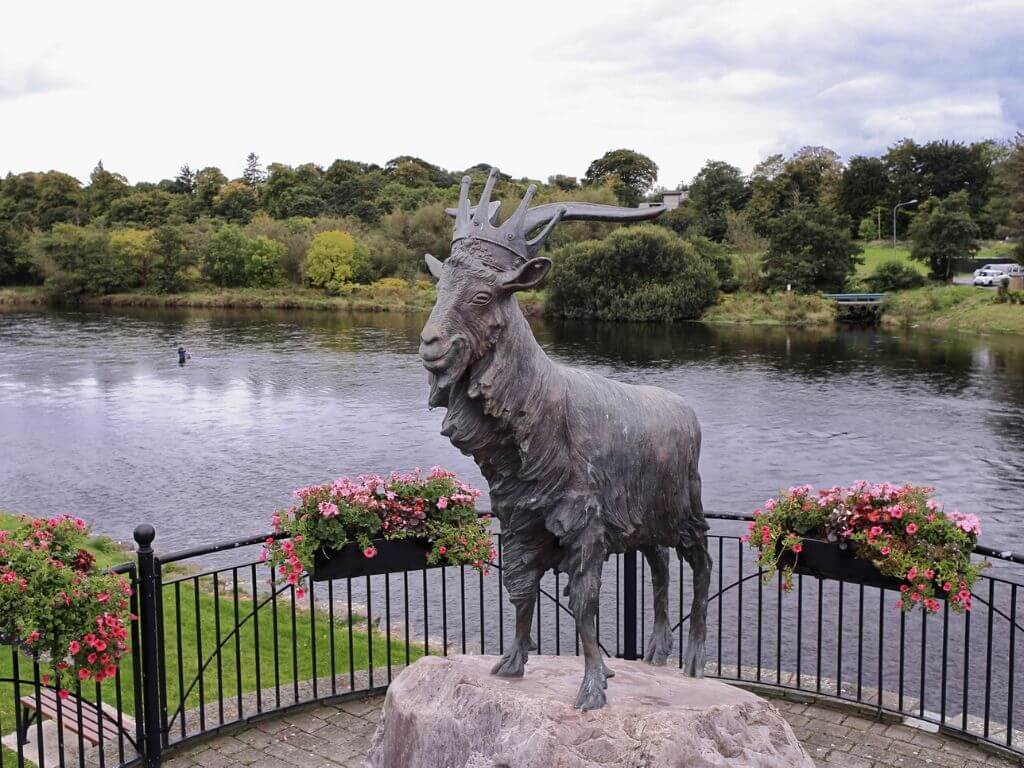
Conclusion
Ireland’s hidden gems offer unforgettable experiences beyond the typical tourist spots. You’ll find breathtaking landscapes, rich history, and warm local culture in these lesser-known destinations.
By venturing off the beaten path, you can discover Ireland’s authentic charm. Explore ancient ruins, hike scenic trails, and immerse yourself in traditional Irish music and folklore.
These hidden treasures provide a unique perspective on the Emerald Isle. You’ll create lasting memories and gain a deeper appreciation for Ireland’s diverse heritage and natural beauty.
Consider including some of these hidden gems in your travel plans. They offer a chance to escape crowds and connect with Ireland’s true essence.
Remember to respect local customs and the environment as you explore. Your journey through Ireland’s hidden gems will be rewarding and eye-opening.
You might also enjoy reading these articles:
- Celtic Symbols and Their Meanings
- What to Wear in Ireland
- Best Souvenirs from Ireland
- Best Places to Visit in Ireland
Pin these for later!
